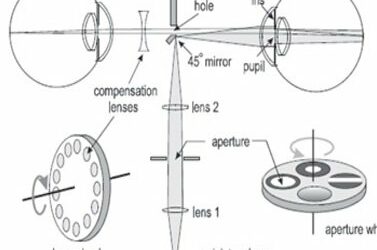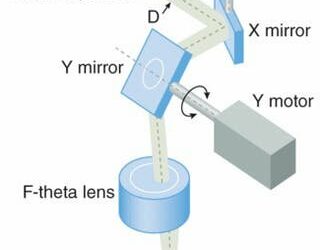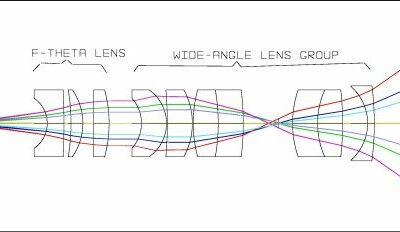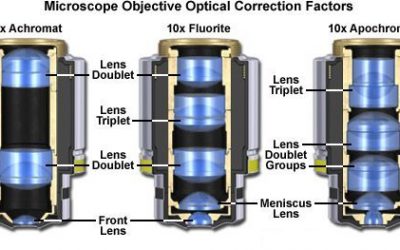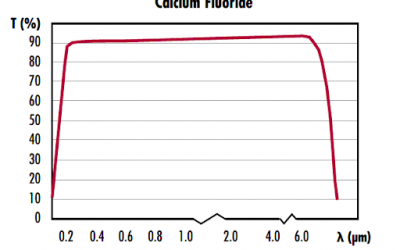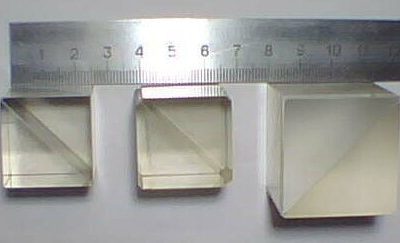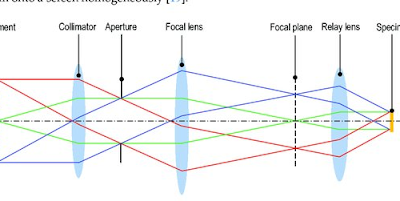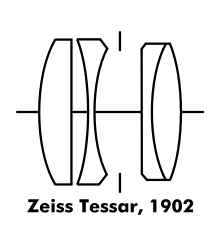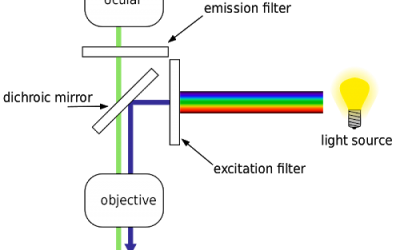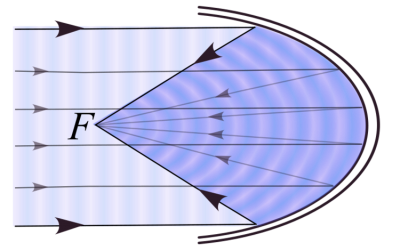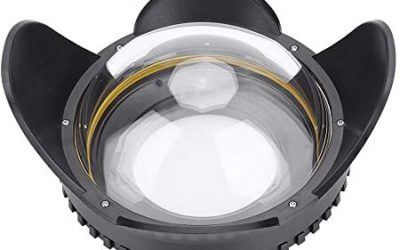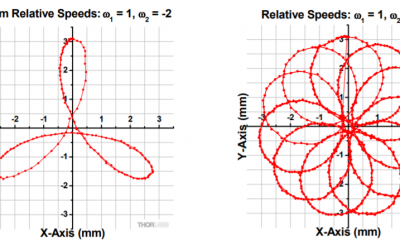In the next couple of articles, we will talk about the different instrumentation used by ophthalmologists and optometrists. As you can imagine, there are many restrictions when designing an optical instrument that will be used in a patient. It matters whether the...
FAQ
Scan Mirrors In Industrial Welding
by Victor Argueta | FAQ, Optical Components, Victor Argueta
This is our last entry on our scanning mirrors series. In this article, we will talk about the use of scanning mirrors when working with welding environments. As you can imagine, not only do the optical requirements differ when compared to those of a scanning...
Steering Mirrors In LIDAR Systems
by Victor Argueta | FAQ, lens design consulting, Optical Components, optical engineering, Victor Argueta
This is our third installment of a four-series blogs about steering mirrors. We have talked previously about steering mirrors in laser markings and steering mirrors in OCT systems. This week, we will talk about the steering mirror requirements for those in LIDAR...
Understanding objective lenses
by Victor Argueta | FAQ, lens design, Optical Components, optical design, optical engineering
Introduction In previous entries, we have talked about the design of scanning microscopes, infinity corrected microscopes, confocal microscope design, and Koehler illumination systems-a common illumination system in microscopes. The most essential microscope element...
Rigid Endoscope Design
by Victor Argueta | FAQ, optical design, optical engineering, Victor Argueta
Endoscopes are medical devices designed to collect the smallest images from inside the human body. Endoscopes can be divided into two categories: rigid endoscopes, in which relay lenses are stacked together generally creating a high-quality image, and flexible...
Cardinal Points
by Victor Argueta | FAQ, optical design, optics, Victor Argueta
When I was a young undergrad engineering student, I always found optics to be a very confusing subject. It was not only the equations, but what it looked like hundreds of different definitions involved in even the simplest of optical systems. Some concepts, like...
Powell Lens Design
by Victor Argueta | FAQ, lens design, machine vision, optical design
Previous posts have reviewed different techniques for beam homogenization as well as the difference between spot size and beam angle. This post will review a method for beam shaping using Powell Lenses. Powell lenses are lenses that create a straight laser line by...
Calcium Fluoride Glass: An Overview
by Victor Argueta | FAQ, lens design consulting, OFH, Optical Components
The choice of glass is a fundamental part in the optical design process. This is especially true for IR and thermal optics materials. In this article, we will review Calcium Fluoride (CaF2), an interesting glass that has a wide range of applications. Before we start,...
Beam Splitters: Explained
by Victor Argueta | FAQ, Optical Components
Beam splitters are a fundamental element in optical systems. Beam splitters are, in essence, optical components used to divide a single light source (usually a laser) into two separate beams. The more common kind of beam splitters (the kind that you can find in most...
Koehler Illumination
by Victor Argueta | FAQ, lens design consulting
When designing any optical system, an optical engineer needs to consider how illumination will be used: specifically, how the illumination could affect the way the image is created. If not carefully designed, some illumination systems may create a kind of...
Tessar Lens Design
by Victor Argueta | FAQ, lens design, optical design
Among the many lens design configurations, one of the most common lens optical layouts is the Tessar Lens. This layout was created by Paul Rudolph in 1902 for photographic lenses. In the golden age of film photography, the...
M squared and designing laser beam optics
by Victor Argueta | FAQ, optical design
There are different ways to calculate the quality of a laser beam. In general, we want our laser beam to be as close to a theoretical Gaussian Beam as possible. The question then is how do we measure the profile of our beam and how do we compare it against our ideal...
Confocal Microscope Design: Explained
by Victor Argueta | 3D, FAQ, optical design
Confocal microscopy is a type of microscopy that uses a focused laser beam to illuminate a sample and a pinhole aperture to eliminate out-of-focus light, resulting in high-resolution images with improved contrast and clarity. The name "confocal" refers to the use of a...
Fisheye Lens Design
by Victor Argueta | FAQ, illumination, lens design consulting, optical design
Anyone who has peaked through a hotel room peephole has used a fish eye lens. Usually, the fish eye lens has a very short focal length (less than 15mm for a 35mm-size image sensor), but a large field of view (FOV). The latter can be as large as...
Parabolic Mirror Design
by Victor Argueta | FAQ, optical design, optical engineering, optics definitions
Parabolic mirrors are optical systems that are used to collect or distribute energy. They have a wide range of applications from solar collectors for water heating systems to microscopes and telescopes, and everyday flashlights. The most common way ...
Apochromatic Lens Design
by Victor Argueta | FAQ, lens design, lens design consulting, optical design, optics definitions
In an achromatic lens design, we optimize such that two wavelengths, usually red (590nm) and blue (495nm), focus on the same image plane. This is done to reduce chromatic aberration. In this article, we’ll talk about a similar design type called an Apochromatic lens...
Understanding Free Space Optical Communication Design
by Victor Argueta | FAQ, optical design, optics definitions
A previous post discussed underwater optical design. This week, we will review the diametrical opposite application - free-space optical communication (FSO). As with underwater optical design, one of the challenges facing FSO is the optical signal propagation...
Optical Design Considerations for Underwater Optics
by Victor Argueta | FAQ, illumination, lens design consulting
The design of an underwater camera lens can be challenging due to the large number of variables at play. As with every optical system design, the selection of cameras, lenses, housings, and operational parameters greatly influences the performance of the complete...
Unlocking Risley Prisms: Precision in Optical Steering | OFH
by Victor Argueta | FAQ, optical design, opto-mechanical design
Introduction Previous posts have explained reflective, anamorphic and dispersive prisms and their use in optical systems. Today we will explain a prism configuration called Risley Prism. A Risley prism is actually two wedge prisms close to each other that can be...
How the Abbe Sine Condition impacts optical designs
by Victor Argueta | FAQ, lens design, optical design
When making first order optical design calculations, most engineers use parameters based on paraxial (or ideal) systems. That is, lenses in which the chief rays are very close to the optical axis. However, that’s not always the case, and as we move...
